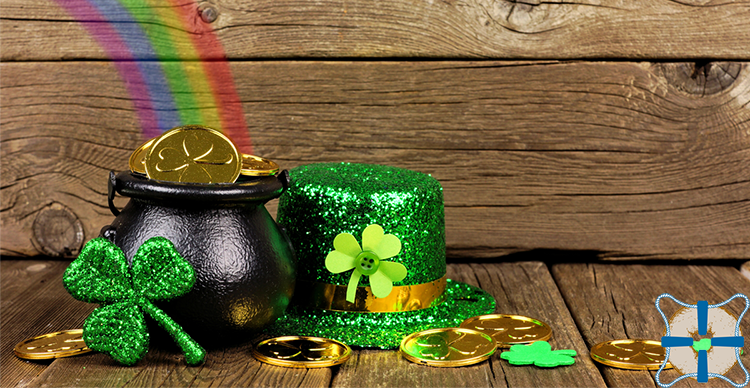St. Patrick’s Day Traditions and Legends
There is an old Irish saying:
“There are only two kinds of people in the world…
The Irish and those who wish they were.”
Well, at least for one day a year, on St. Patrick’s Day, we are all Irish! On this day, most folks participate in some sort of shenanigans. Some like a little good wholesome fun, like playing little tricks on family members or attending one of many local parades; whereas others start the day’s revelry as early as 6 am. But, did you ever wonder about the origins of St. Paddy’s Day traditions and how these celebrations began? Here are some interesting tidbits about St. Patrick’s Day.
The Man, The Myth, The Legend
Interesting fact – St. Patrick – not Irish. Yup. He was actually a Brittish nobleman born in around 400A.D. And, while he was born into a religious family, he became an atheist at an early age. The legend says he was kidnapped by Irish pirates (hmm ancient shenanigans, perhaps?) at age 16. It was during this period of imprisonment that he rediscovered his faith. After 17 years enslaved, he escaped back to his native land. However, legend has it that he later returned to the Emerald Isle as a missionary. Although actual records are unclear, March 17 is widely accepted as the day he died, hence, the reason we celebrate St. Patrick’s Day on that date.
Well, Color Me Green
Green clothes, green beer, green food, even green rivers. Everyone seems to go green on St. Paddy’s day. Did you know?
For over 50 years the strange tradition of dying the Chicago River green has been in the hands of the same family. The Butler and Rowan Family class have been responsible for this mischief. As the story goes, every year, a six-person boat crew takes to the water and shakes in a top secret orange powder that makes the water green for up to five hours.
A Little Pinchy-Poo
Did you forget to wear green on St. Paddy’s Day? You may get a pinch! Wearin’ o’ th’ green is an American tradition dating back to the 1700’s! The legend is that wearing green makes you invisible to leprechauns, who would go around pinching folks not donning the color. These days it seems that “honorary leprechauns” take it upon themselves to remind you to dig out that green shirt at least once a year on March 17th.
Parade, Promenade, and Pageantry
Ancient religious observances were the norm in Ireland for St. Patrick’s Day. However, Irish Americans are responsible for modern celebrations. The day was first celebrated in elite clubs throughout Philadelphia, Boston, New York, Savannah, and other areas heavily settled by the Irish. It was in New York in 1762 that the very first St. Patrick’s Day parade was held, and by the mid 19th century this tradition took off. New York, Chicago, Scranton, and Philadelphia continue to host some of the largest parades.
Shamrocks and a Little Bit o’ Luck
The legend state that St. Patrick used the shamrock to teach pagans about the Holy Trinity. But, there is really no evidence of that. Today, many folks wear shamrocks on their coats and close the day with the “drowning of the shamrock,” by placing the shamrock in a glass of whiskey for good luck.
Guinness by the Gallons
During a typical day, on average, Americans consume about 600,000 pints of Guinness. But, on St. Patrick’s Day that number jumps to 3 million pints, roughly 375,000 gallons. Furthermore, approximately 13 million pints will be enjoyed worldwide!
Folklore and Leprechauns
Everyone probably knows the image of the rosy-cheeked boozy little men in green suits from Irish folklore. But the actual origin is hazy. The first mention of a “luchorpan,” meaning “little body” goes back 8th century, describing water spirits as told in the book The Element Encyclopedia of Magical Creatures. Another possible source is the Irish fairy Cluricaune who is a cunning spirit who haunts cellars, drinks, smokes and plays tricks, also found in the book above.
Bye Bye Snakes
Did St. Patrick really drive out all the snakes in Ireland? Doubtful. Here’s why. Ireland is an island, and there were never snakes in the country. However, many believe the snakes are a metaphor for pagan ideology. And through St. Patrick’s missionary work he drove away these beliefs and help Christianize the Emerald Isle.
Corny Food Traditions
Irish-Americans in the 19th century were mostly poor folk. And, many of their traditional foods and recipes are comprised of inexpensive ingredients. Case in in point: corned beef and cabbage. The meat is a cheaper cut that requires long stewing times, and cabbage was also a low-cost veggie available in the spring, throw in some carrots and potatoes from the root cellar, and you have a hearty dish that could feed your family and friends.
Has all this talk of food and shenanigans got you in the mood for St. Patrick’s Day? Every year Naval Bagels looks forward to celebrating this tradition in only the best way! Whether you plan on enjoying a quiet day with the fam or heading out at 6 am, stop by and pick up some green bagels! St. Paddy’s day is the only day you can get ’em. And, because we love this day so much, Naval Bagels is also a major sponsor for the Annapolis St. Paddy’s Day Parade, held on March 11 at 1 pm.


